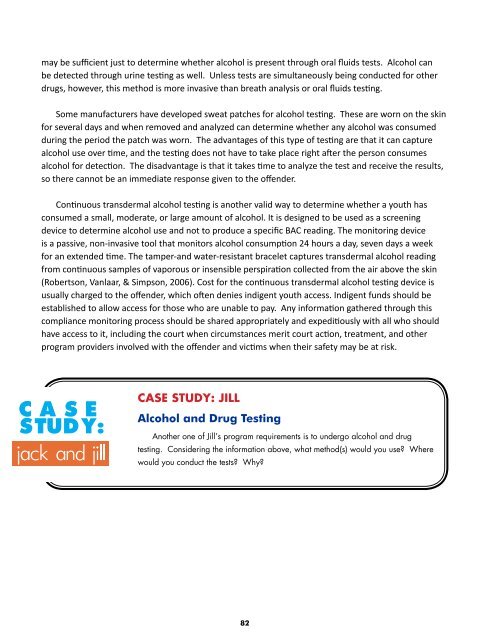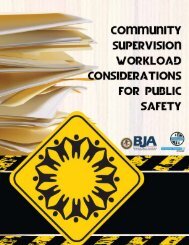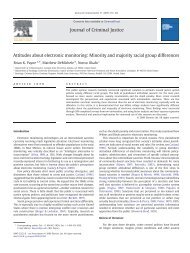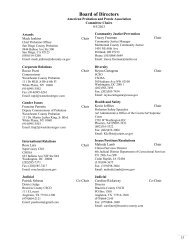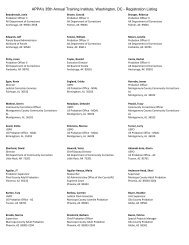Intervention Principles and Practice Guidelines for - Underage ...
Intervention Principles and Practice Guidelines for - Underage ...
Intervention Principles and Practice Guidelines for - Underage ...
Create successful ePaper yourself
Turn your PDF publications into a flip-book with our unique Google optimized e-Paper software.
may be sufficient just to determine whether alcohol is present through oral fluids tests. Alcohol can<br />
be detected through urine testing as well. Unless tests are simultaneously being conducted <strong>for</strong> other<br />
drugs, however, this method is more invasive than breath analysis or oral fluids testing.<br />
Some manufacturers have developed sweat patches <strong>for</strong> alcohol testing. These are worn on the skin<br />
<strong>for</strong> several days <strong>and</strong> when removed <strong>and</strong> analyzed can determine whether any alcohol was consumed<br />
during the period the patch was worn. The advantages of this type of testing are that it can capture<br />
alcohol use over time, <strong>and</strong> the testing does not have to take place right after the person consumes<br />
alcohol <strong>for</strong> detection. The disadvantage is that it takes time to analyze the test <strong>and</strong> receive the results,<br />
so there cannot be an immediate response given to the offender.<br />
Continuous transdermal alcohol testing is another valid way to determine whether a youth has<br />
consumed a small, moderate, or large amount of alcohol. It is designed to be used as a screening<br />
device to determine alcohol use <strong>and</strong> not to produce a specific BAC reading. The monitoring device<br />
is a passive, non-invasive tool that monitors alcohol consumption 24 hours a day, seven days a week<br />
<strong>for</strong> an extended time. The tamper-<strong>and</strong> water-resistant bracelet captures transdermal alcohol reading<br />
from continuous samples of vaporous or insensible perspiration collected from the air above the skin<br />
(Robertson, Vanlaar, & Simpson, 2006). Cost <strong>for</strong> the continuous transdermal alcohol testing device is<br />
usually charged to the offender, which often denies indigent youth access. Indigent funds should be<br />
established to allow access <strong>for</strong> those who are unable to pay. Any in<strong>for</strong>mation gathered through this<br />
compliance monitoring process should be shared appropriately <strong>and</strong> expeditiously with all who should<br />
have access to it, including the court when circumstances merit court action, treatment, <strong>and</strong> other<br />
program providers involved with the offender <strong>and</strong> victims when their safety may be at risk.<br />
Case Study: Jill<br />
Alcohol <strong>and</strong> Drug Testing<br />
Another one of Jill’s program requirements is to undergo alcohol <strong>and</strong> drug<br />
testing. Considering the in<strong>for</strong>mation above, what method(s) would you use? Where<br />
would you conduct the tests? Why?<br />
82


